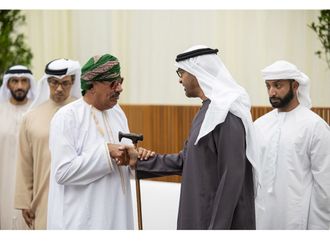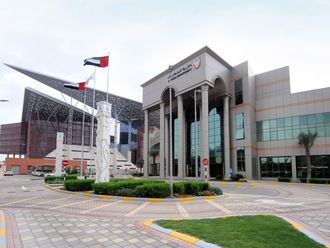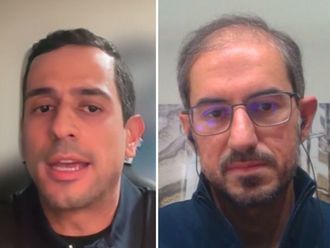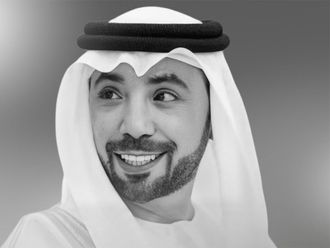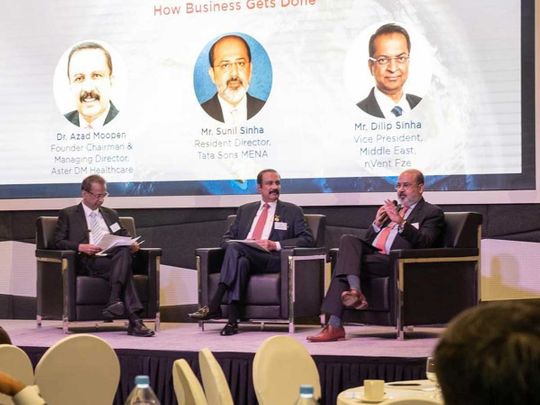
There has been a transformational change in bilateral relationships between India and the UAE since 2014. The relationship between the two nations have evolved from a traditional trade agreement to a comprehensive strategic partnership. This can be attributed to the pro-business agenda of the newly elected government led by Prime Minister Narendra Modi in 2014 and the new oil reality prompting UAE government to focus on alternative growth drivers beyond the hydrocarbon sector.
A significant improvement in bilateral relationships was witnessed post the landmark visit of Prime Minister Modi in August 2015 and following the visit of Crown Prince Sheikh Mohammed Bin Zayed Al Nahyan in February 2016. Both the leaders clearly understood the significance of deepening cooperation in various areas to enhance trade to reach $100 billion by 2020.
According to the Government of India, trade between UAE and India crossed $59.9 billion in FY18-19, with $30.1 billion worth Indian exports to UAE and $29.8 billion worth UAE imports to India, making India one of the top trading partners of UAE. Furthermore, Jebel Ali Free Zone (JAFZA) is home for more than 800 leading Indian companies.
According to data from the Government of Dubai Land department, Indian investors are the highest ranking in terms of volume and value of investments across nationalities. As a result, the strengthening of bilateral relations between the two nations should be encouraging for corporates, which is likely to witness an increase in investment flows in the coming years in key sectors such as education, hospitality and transport & logistics and chiefly, in healthcare.
Healthcare: Industry overview
In recent years, the UAE has seen a surge in new products and treatments, rise in international service providers, in addition to adopting new and innovative technologies such as augmented reality (AR) systems, surgical robots, and artificial intelligence (AI) enabled medical equipment. Most notably, privatization of hospitals and mandatory medical insurance, especially in Dubai and Abu Dhabi, has continued to encourage spending and contribute to a more integrated health system. As a result, UAE-based hospitals and service providers are now offering increasingly innovative therapies, making the country attractive for those seeking treatment as well as for investors.
Sector size and growth
The healthcare sector has proven to be one of the most resilient sectors in the UAE, recording rapid growth and advancement over the last decade. The healthcare ecosystem in the UAE is one of the most developed among the GCC nations and the government continues to expand and upgrade the system to match international standards with focus on encouraging innovations and technological developments. UAE has a comprehensive government funded healthcare service as well as a rapidly developing private healthcare system.
As of 2016, the overall healthcare spend in the UAE stood at $12.6 billion, accounting for approximately 20% of the total GCC spend, the second highest in the GCC after Saudi Arabia. The government healthcare expenditure stood at around $9.1 billion in 2016, accounting for 72.5% of the total healthcare expenditure. The UAE also had the second highest per capita healthcare spend in 2016, at $1,274 per person, next only to Qatar, at $1,760 per person.
The UAE has witnessed an exponential rise in demand for healthcare services in the last decade, largely driven by increasing population, a surge in incidences of lifestyle-related diseases, increased access to treatment due to health insurance schemes, rising medical tourism and an ageing population.
As a result, the UAE healthcare market is becoming increasingly specialized in terms of service offerings with the establishment of several specialty hospitals, medical cities and healthcare centers. As of 2017, UAE was home to 143 hospitals with private hospitals accounting for 68.5% of the total. The push for privatization has seen the number of private hospitals grow at a rate of 19% from 65 hospitals in 2012 to 98 in 2017. However, the growth in hospital beds has not been enough to sustain the demand and meet the healthcare needs of the growing population effectively.
The total number hospital beds have risen from 9,681 in 2012 to 13,280 in 2017 on the back of government and private sector collaborating for several PPP projects to address the issues. As of 2017, the total number of beds per 10,000 population was 13. According to Alpen Capital, the requirement of beds in the UAE is likely to reach 14,969 by 2022. This represents an additional demand for 2,535 new beds between 2016 and 2022.
The UAE is also expanding in the manufacturing of pharmaceutical products amid rising demand as scientific advances that have led to product innovation with newer and potentially more useful medicines accompany it.
Industry outlook
According to EY and Oxford Economics, healthcare spending in the UAE is expected to grow at a CAGR of 3.8% to reach $14.8 billion in 2021, up from $12.3 billion in 2016.
The out-of-pocket spending in the UAE is likely to rise to $3.7 billion by 2021 from $2.9 billion in 2016, while the private health insurance spending is likely to reach $1.3 billion in 2021 from just over $1 billion in 2016.
Regulatory environment and government initiatives
The Ministry of Health & Prevention (MOHAP) overlooks the UAE Healthcare sector at a Federal level. At the state-level, the Health Authority Abu Dhabi (HAAD), the Dubai Health Authority (DHA) and the Sharjah Health Authority, respectively, govern the Emirates of Abu Dhabi, Dubai and Sharjah.
Other public sector institutions that oversee the delivery and quality of healthcare services include Abu Dhabi Health Services Company (SEHA), Center for Healthcare Planning & Quality (CPQ) and Medical Practice Committee, among others.
Tax regimes
Under the newly rolled out legislation to implement VAT in the UAE, the government has classified majority of the healthcare services as Zero-VAT. This includes basic healthcare and related goods and services. While government bodies operating in a sovereign capacity and entities located in designated zones are not subject to taxation, the entities in the free zone of Dubai Healthcare City, a non-designated zone, are subject to the provisions of VAT.
On the other hand, additional services not directly related to the benefit of the patient and certain transactions performed on the healthcare apps are also subject to VAT. Similarly, certain functions under insurance and medical tourism are included in the tax regime.
FDI limits
While 100% foreign ownership was earlier only allowed to entities in the designated geographic economic zones in the UAE, called free zones, a change in the law in 2019 has now approved a list of 13 sectors, including healthcare, that are eligible for 100% FDI.
Over the 2015-2017 period, Dubai FDI registered 22 healthcare projects, accounting for more than $105 million of CAPEX. The diversity of the projects, from specialty hospitals and outpatient care centers, to medical equipment and R&D showcase the multiple development possibilities existing in Dubai.
ABOUT IBPC DUBAI
Established in 2003, IBPC Dubai is the oldest and largest organisation of Indian businessmen and professionals. This knowledge-sharing and networking platform is the sole Indian business council recognised and regulated by the Dubai Chamber of Commerce and Industry (DCCI/ Dubai Chamber).
IBPC aspires to sustain as a vibrant catalyst; promoting economic co-operation including trade, investments and other financial flows between the UAE and India as well as strengthen beneficial business relationships between UAE business entities and their Indian counterparts in the UAE and India across strategic sectors. IBPC has an Education and Healthcare Focus Group of specialist members —individuals and corporates.



